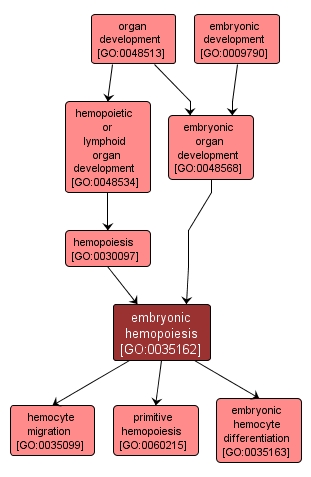GO TERM SUMMARY
|
| Name: |
embryonic hemopoiesis |
| Acc: |
GO:0035162 |
| Aspect: |
Biological Process |
| Desc: |
The stages of blood cell formation that take place within the embryo. |
Synonyms:
- embryonic hematopoiesis
- embryonic haemopoiesis
- embryonic haematopoiesis
|
|

|
INTERACTIVE GO GRAPH
|














